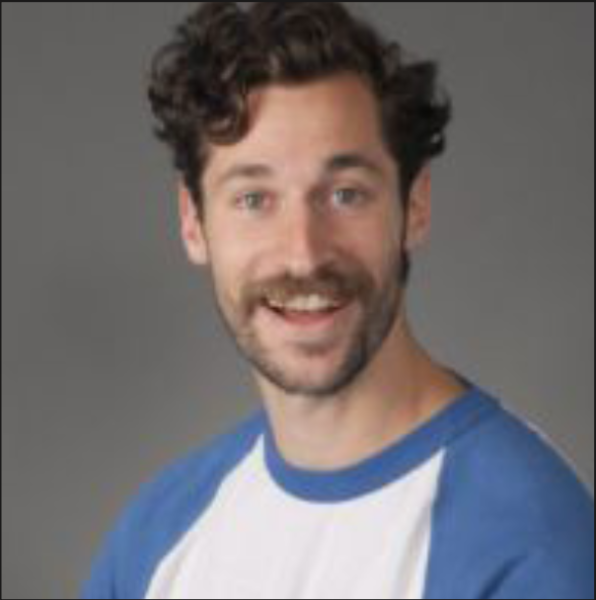Young Men of Color Symposium
Hill Harper Gives Keynote Speech at Second Annual Event
On Saturday, November 2, approximately 130 young men of color from various independent schools across the United States found themselves in the blue cushion seats of the Heller Auditorium, anticipating a day of vulnerability and dialogue about topics which are seldom at the forefront of their typical classroom environments.
With months of preparation leading up to this date, information about the conference had been disseminated through social media, word of mouth, and to schools with which Parker has direct affiliations, such as the Illinois High School Association’s Independent School League.
The Symposium began promptly with a presentation from Keynote Speaker, Hill Harper. Despite graduating cum laude from Harvard Law School, Harper decided to pursue a career in acting and moved to Los Angeles after graduation in 1992. Now, with 26 years of acting in television and movies under his belt, Harper has also added to his list of accomplishments several books including “Letters to a Young Brother: MANifest Your Destiny” and “The Conversation: How (Black) Men and Women Can Build Loving.”
“I hope when young men of color see me, they think, ‘this isn’t what I usually see,’ or ‘he doesn’t fit this box,’ and hopefully seeing it is enough motivation to say ‘I, too, can think differently,’” said Harper.
Head of Upper School Justin Brandon says that it is valuable for young men of color to be exposed to role models with interests and goals which are multi-faceted. “He has done a lot of great work in so many different areas. He, in a lot of ways, is a modern Renaissance man,” said Brandon. “Yes, he’s a TV and movie star, but he also has a JD from Harvard. He’s an entrepreneur and owns real estate, while also being a father. In addition to that, Hill is also a cancer survivor, which is something he shared in his small group.”
In deviating from what Harper refers to as the “force-fed” image for men of color in the United States, he is determined to assist participants in expanding their own narratives, regardless of the societal expectations imposed on them. “I try to break down the notion that you can only be successful during certain types of activities. So many young men of color that I’ve talked to believe that if they’re not rapping or bouncing a basketball, there is a limitation on their ability to achieve,” said Harper. “How did we get to a place where the only real success, if you’re a young black male, is to be a rapper or a basketball player, or a drug dealer, depending on your community?”
On the Friday morning preceding the Young Men of Color Symposium, Harper took to the stage during Morning Exercise to speak about what it means to be an architect of your own life. On Saturday, Harper drew from a similar concept, presenting the idea of a “life blueprint” with the focus of young men of color in mind. “The real fundamental challenge with any distinct group that his been historically marginalized is that everything I’m talking about has been magnified,” said Harper. “Whether you’re an immigrant population, a person of color, or a man of color in this society, you feel extremely vulnerable in terms of violence, police, potential achievement, and opportunity. All of this magnifies your conscious and subconscious decision making. You have to work even harder.”
Following the keynote speech, participants were split into age-appropriate groupings, with a distinction made between boys in grades 6-8 and 9-12. “It’s valuable to have sessions like this because during the school year it’s easy to get lost with other things,” said Junior and co-Head of Parker’s Men of Color Heritage Affinity group Aviel Acevedo, “We were able to talk about specific issues that we, as men of color, come across in private institutions.”
According to Acevedo, participants engaged in various icebreaker activities, one of which began with the upper school boys standing in a circle facing one another. “Someone would say something about their experiences and if you had experienced something similar, you would take a step into the center,” said Acevedo, “This exercise was a visual representation of the thoughts and feelings of people who are going through the same things as you.”
Brandon says exercises such as the one described by Acevedo are intended to form a sense of unity among participants. “It gives the boys a chance to be in the majority in a space where they are always a minority, in terms of percentages of student body,” said Brandon. “For them, it’s a powerful dynamic to finally be amongst people that look like them, instead of being one of the few.”
According to Brandon, the number of males of color in independent schools is significantly less than that for females of color. “For boys of color this program creates a space for them to be honest with each other and to talk about feelings and emotions that they might not be willing, or able, to share in their school environment,” said Brandon.
Following age-appropriate dialogue sessions and a lunch period, participants were separated into affinity groups based on race and ethnicity. “I am multi-racial, so I was able to go to a group made up of all multi-racial students,” said Acevedo, “I think it’s really important to have strong bonds with people who look and think like you.”
In comparison to the first annual Young Men of Color Symposium in 2018, Brandon said that administrators integrated significantly more dialogue-based engagement into the programing. “Last year it was more education-based, as there were lessons that the adults were asked to teach,” said Brandon. “This year we took a lot of that out so that there was a chance for more dialogue. We wanted to give our students a chance to just talk—creating a space to guide conversation, but not direct it.”
“It’s up to all of us to make sure that everyone feels a part of this environment. It’s important that we don’t try to single students out for their experiences and to make them be the spokesperson for that kind of experience.” said Brandon. “We need to recognize that we are one of something, but not the something. We can’t speak for all people that look like us, whatever your identity may be.”







